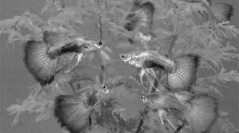

 Cryptogamie, Algologie
32 (2) - Pages 157-204
Cryptogamie, Algologie
32 (2) - Pages 157-204A renewed interest in investigating the relationships existing between body size and environmental variables is pervading ecological studies. Phytoplankton has a long tradition as model system in studies of community ecology and several research concepts were developed using these organisms. In this paper we try to review the relevance of analyzing the morphological features of phytoplankton in ecology. Starting with a brief account of allometric relationships existing in phytoplankton, we i) examine the physical context in which phytoplankton grow, and ii) highlight the role of their size in nutrient uptake, and that of their shape in light harvesting. Moreover, the way in which the morphology of phytoplankton organisms cope with the hydrodynamical conditions of a given water-body are considered. In addition, we also included a paragraph on the role of grazing in moulding the size and the shape structure of phytoplankton assemblages. An account on the main research currents about the role of morphology in the definition of morpho-functional traits of phytoplankton is offered. All these approaches, which can be viewed as complementary of taxonomy, both molecular and "traditional", are promising tools to better understand the functioning of aquatic ecosystems and may offer a vast array of new perspectives in the field of aquatic ecology and phytoplankton research as well as a simplified tool to perform water quality monitoring.